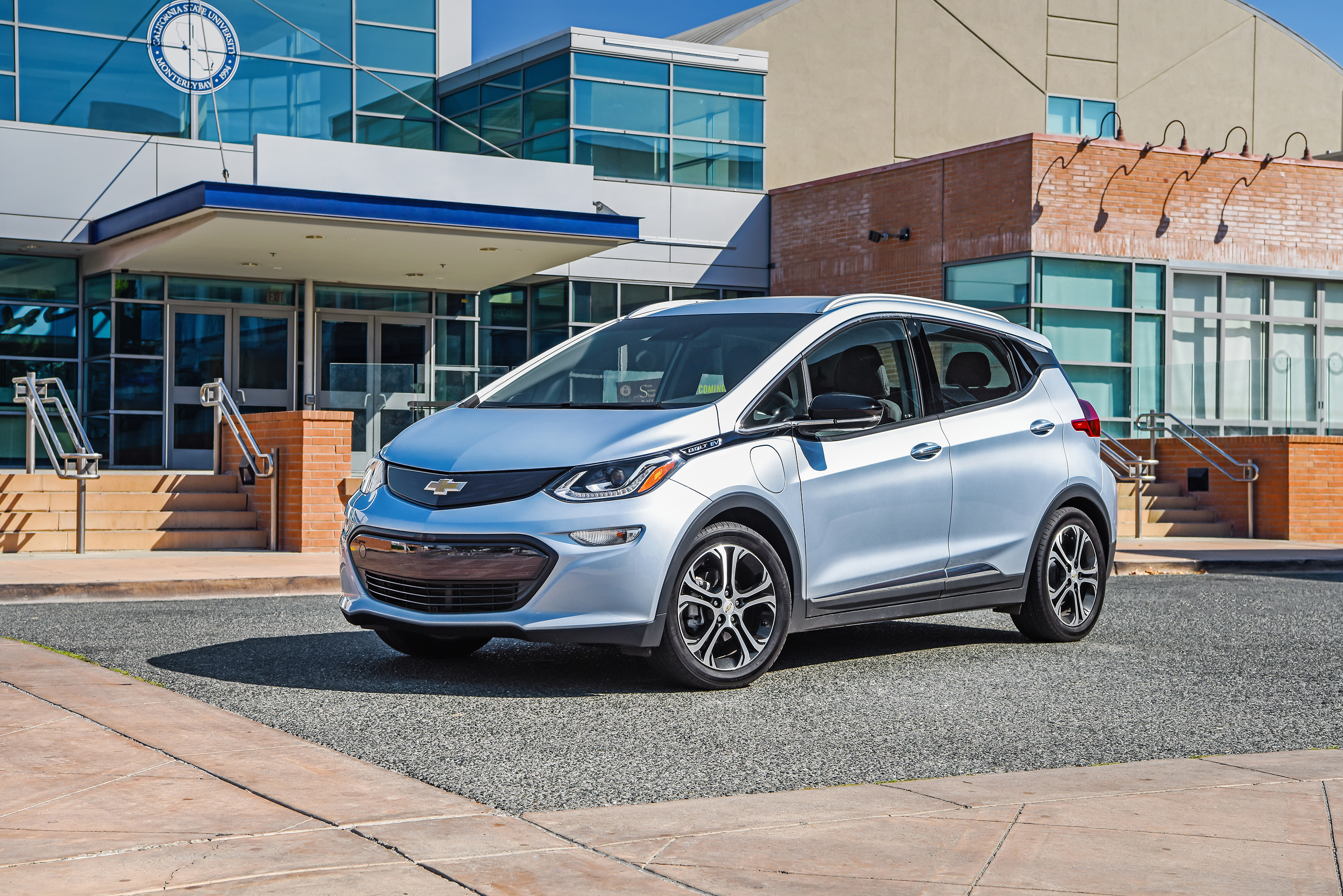
As Chevrolet’s first ground-up, long-range electric vehicle, the 2017 Bolt EV offered designers unprecedented freedom, resulting in a vehicle that crosses boundaries and challenges expectations in the electric vehicle (EV) segment.
“We were given a blank canvas – a rare opportunity with a unique platform to recast EV design for customers across the spectrum,” said Stuart Norris, managing director of Design. “The team answered the challenge with a progressive design distinguished by dramatic graphics and exceptional passenger space.”
The Bolt EV’s styling centers on its unique proportion, which is driven by a flat battery pack mounted beneath the interior floor. A 102.4-inch wheelbase and wide track give it a solid stance and the look of a small crossover. A short front overhang indicates that driving power comes from next-generation technology.
The large windows, plunging beltline and steeply raked windshield contribute to the progressive profile and emphasize the interior’s spaciousness and bright airy feel.
The large greenhouse offers a panoramic view from upright, SUV-like seating positions. The rear-window glass extends all the way to the license plate and integrates with LED taillamps on the liftgate. By integrating the taillamps into the full-width liftgate, the Bolt EV’s architecture enables a wide opening that makes it easier to slide boxes and other items in and out of the vehicle.
LED headlamps wrap around the forward edge of the front fascia, creating an aggressive character. The signature Chevrolet dual-element grille has been reimagined and features a smooth, clean and integrated design incorporating graphics with depth and a three-dimensional quality. It is offered with two signature colors, harmonized with the exterior color choices.
Functional, spacious interior
Due to the packaging of the battery pack, the Bolt EV interior offers seating for five passengers and 16.9 cubic feet of cargo space behind the rear seat.
“The flat-pack orientation offered the flexibility to make the most of the proportions while creating a clean, sculpted design,” said Norris. “This really opened up the interior and created a fantastic view from every seating position. All of this additional space gave us a lot of opportunities to play with creative design and storage solutions.”
A “floating” instrument panel, for example, features a 10.2-inch-diagonal capacitive-touch control screen which creates a horizontal feel to the interior. Maximizing knee room and cross-vehicle spaciousness.
Additionally, a multipurpose, connected center console features side-by-side cupholders, a wireless charging location and a sliding armrest covering a storage compartment large enough to store a tablet device.
In the rear, the Bolt EV’s 16.9 cubic feet of cargo space is more than offered in the Honda Fit (16.6 cubic feet) and the BMW i3 (15.1 cubic feet).
Artful engineering solutions complement the practical use of space, with features such as thin-frame seats that enhance rear-seat roominess. The seats also incorporate the side air bag modules as design elements.
The interior is offered in a fresh, bright color palette that emphasizes the open passenger environment – with signature-color Electrification blue ambient lighting emanating from beneath metallic white decorative trim.
“The Bolt EV’s design elements are designed for everyday life and the space inside accommodates it all, whether you and your friends go shopping for the day or take off for the weekend,” said Norris. “Inside and out, this game-changing vehicle makes a dramatic statement with a distinctive identity that can only be a Chevy and challenges expectations for what an affordable EV can offer.”
DRIVE UNIT AND BATTERY AT THE HEART OF CHEVROLET BOLT EV
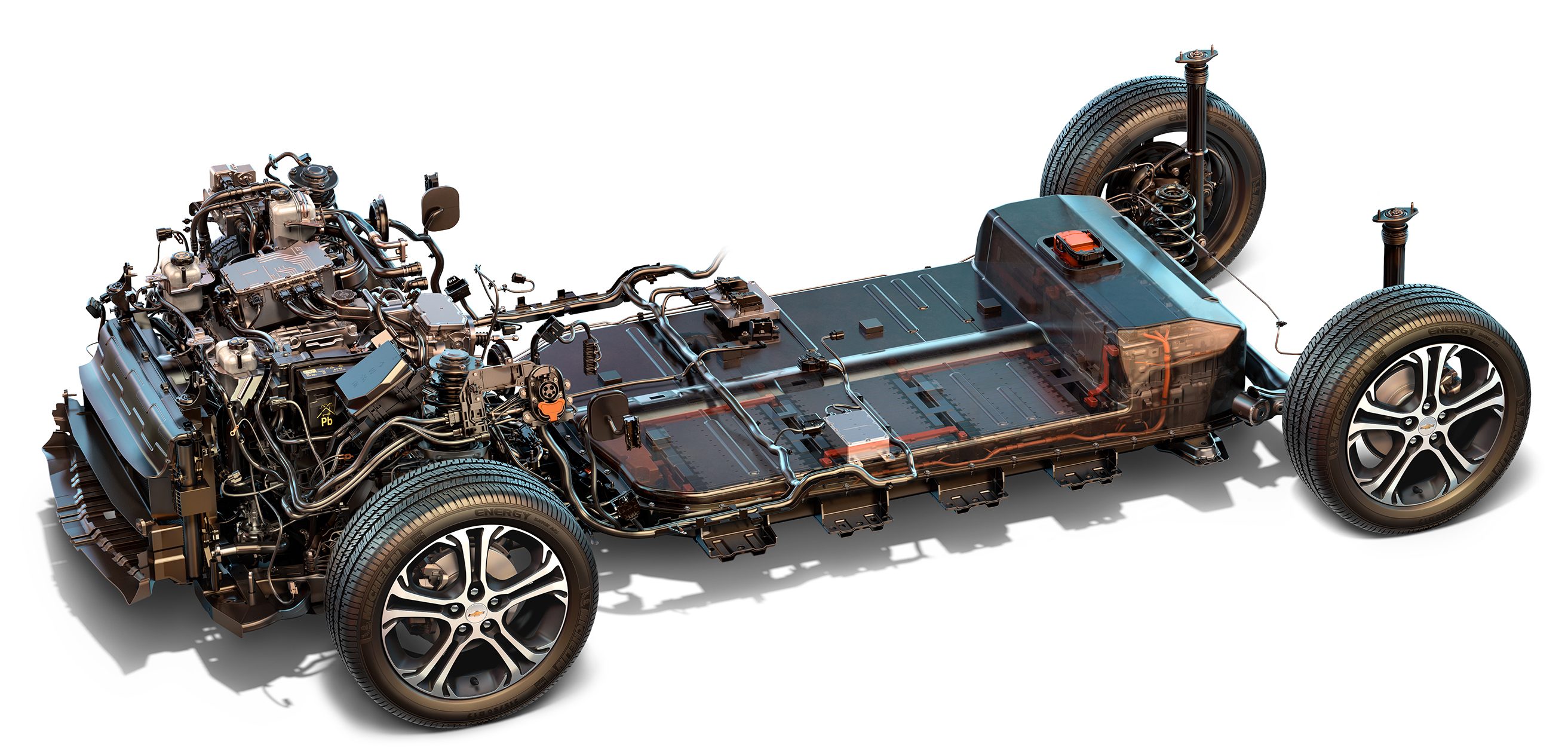
The 2017 Chevrolet Bolt EV does more than set a new benchmark for affordable, long-range EV driving. It also raises the bar when it comes to driving performance.
Engineers developed the Bolt EV’s propulsion system to offer more than an estimated 200 miles (based on GM estimates) and a delightful driving experience that’s more akin to a compact sports sedan than a small utilitarian crossover.
“Being the leader in range and affordability means nothing if the car isn’t going to excite you each time you get behind the wheel,” said Josh Tavel, Chevrolet Bolt EV chief engineer. “That’s why the team was tasked with delivering a propulsion system that would also make the Bolt EV an electric vehicle that owners would love to drive.”
Single Motor Drive Unit
Like most EVs on the road, the Bolt EV’s drive system uses a single high capacity electric motor to propel the car. But it’s the smooth, powerful and quiet motor design, gear configuration and shift-by-wire system that separates it from the pack.
The engineering team designed the Bolt EV’s electric motor with an offset gear and shaft configuration tailored to meet efficiency and performance targets – most notably more than an estimated 200 miles of range. The motor is capable of producing up to 266 lb.-ft. (360 Nm) of torque and 200 hp (150 kW) of motoring power. Combined with a 7.05:1 final drive ratio, it helps propel the Bolt EV from 0-60 mph in less than seven seconds.
Power delivery is controlled by Chevrolet’s first Electronic Precision Shift system. This shift and park-by-wire system sends electronic signals to the Bolt EV’s drive unit to manage precise feel and delivery of power and torque, based on drive mode selection and accelerator inputs. A by-wire shifter requires less packaging space than a traditional mechanical shifter, resulting in more interior space and improved interior layout.
60 kWh Battery System
Having more than 1.3 billion miles of EV experience from the Chevrolet Volt helped Bolt EV battery engineers and strategic partner LG Electronics to develop an all-new cell and battery pack to offer more than an estimated 200 miles of range.
Battery system preliminary specifications include:
- 60 kWh lithium-ion battery pack.
- 288 lithium ion cells
- Five sections
- 10 modules
- 96 cell groups – three cells per group
- 960 lbs. (435 kg) total weight
“You usually have a battery cell that delivers either the desired levels of energy or power, but not traditionally both. With this cell design and chemistry we were able to deliver a battery system with 160 kilowatts of peak power and 60 kilowatts hours of energy,” said Gregory Smith, Bolt EV battery pack engineering group manager.
The battery uses active thermal conditioning, similar to the Chevrolet Volt, to keep the battery operating at its optimum temperature, which results in solid battery life performance. The Bolt EV battery will be covered by an 8-year/ 100,000 mile (whichever comes first) limited warranty.
Inside the battery pack – which spans the entire floor, from the front foot well to back of the rear seat – is a new cell design and chemistry. The nickel-rich lithium-ion chemistry provides improved thermal operating performance over other chemistries, which requires a smaller active cooling system for more efficient packaging. The chemistry allows the Bolt EV to maintain peak performance in varying climates and driver demands.
The cells are arranged in a “landscape” format and each measures in at only 3.9 ins. (100 mms) high and 13.1 ins. (338 mms) wide providing improved packaging underfloor. The lower profile cell design enabled the vehicle structure team to maximize interior space.
The battery system is mated to a standard equipment 7.2 kW onboard charger for regular overnight charging from a 240-V wall box. A typical commute of 50 miles can be recharged in less than two hours. Bolt EV also features an optional DC Fast Charging system using the industry standard SAE Combo connector. Using DC Fast Charging, the Bolt EV battery can be charged up to 90 miles of range in 30 minutes. Outside temperatures may affect charging times.
Regen System Provides One-Pedal Driving
Regenerative braking has become more than just a tool to boost range, it’s also transformed into a feature that can provide an improved EV driving experience. The Bolt EV features a new regenerative braking system that has the ability to provide one pedal driving.
“Interviews with EV enthusiasts indicated their desire for one pedal driving capability on the Bolt EV. One pedal operation boosts the thrill and uniqueness of EV driving,” Tavel said.
Through a combination of increased regenerative deceleration and software controls, one pedal driving enables the vehicle to slow down and come to a complete stop without using the brake pedal in certain driving conditions.
When operating the Bolt EV in “Low” mode, or by holding the Regen on Demand paddle located on the back of the steering wheel, the driver can bring the vehicle to a complete stop under most circumstances by simply lifting their foot off the accelerator, although the system does not relieve the need to use the brake pedal altogether.
Operating the Bolt EV in “Drive” mode and not pulling the paddle while decelerating delivers a driving experience where usage of the brake pedal is required to stop.
CHEVROLET INTRODUCES 2017 BOLT EV
Chevrolet is introducing the 2017 Bolt EV at the Consumer Electronics Show, fulfilling its promise to offer a long-range, affordable electric vehicle for the masses.
The Bolt EV, which will go into production by the end of 2016, will offer more than 200 miles of range on a full charge. It also features advanced connectivity technologies designed to enhance and personalize the driving experience.
“It was less than a year ago that we revealed the Bolt EV concept and promised to deliver a long-range electric vehicle attainable by the masses,” GM Chairman and CEO Mary Barra said. “The Bolt EV is capable of using the latest mobile app technology to enable car sharing, advanced GPS routing and gamification, all designed to enhance the ownership experience now and into the future.”
Connectivity Simplifies Ownership Experience
The Bolt EV benefits directly from the suggestions and ideas of Volt owners and features technologies that make owning a long-range electric vehicle easy.
The Bolt EV’s connectivity innovations will provide smart, personalized solutions for managing the driving experience. For example, in the future an accurate driving range projection will be based on the time of day, typography, weather and the owner’s driving habits.
Bluetooth low-energy – designed specifically for the Bolt EV to minimize energy draw – seamlessly connects a smart phone to the car while the owner approaches the vehicle.
Many of the Bolt EV’s driver-focused technologies are supported by OnStar 4G LTE, which turns the Bolt EV into a Wi-Fi hotspot, giving owners easier access to apps and services via a high-speed wireless connection.
Other connectivity and infotainment features include:
- 10.2’’ MyLink color touch-screen display
- Customizable, widget-based “flip-board style” operation
- Rear Camera Mirror
- Rear-facing camera provides a wide-angle view of the environment behind the vehicle.
- Surround Vision
- Provides a bird’s-eye view of what’s around the Bolt EV for improved safety during low-speed driving and when parking.
- All-New MyChevrolet Mobile App: Combines important owner and vehicle information and functions, such as:
- Vehicle charge status
- OnStar Map service
- Remote start
- Cabin pre-conditioning
- Owner’s manual information
- Dealer service scheduling
- EV Navigation Mapping
- EV-specific navigation capability that designs routes to maximize range and provide locations of nearby charging station locations if needed.
- Gamification
- In the future, Bolt EV owners will be able to “compete” by comparing driving styles to determine who is driving most efficiently.
The Bolt EV will be built at GM’s Orion (Mich.) Assembly facility, near Detroit.
BASE PRICE
Approximately $30,000 after full federal tax credit.
NEW FOR 2017
- Offers an EPA-estimated 238 miles of range
- Clean-sheet design with crossover-like proportions
- Bluetooth low energy seamlessly connects a smartphone to the vehicle when the owner approaches
- Production begins in late 2016
VEHICLE HIGHLIGHTS
- Connectivity features include EV-specific navigation capability that designs routes to maximize range and provide locations of nearby charging stations if needed.
- Bolt EV’s drive system uses a single, high-capacity electric motor for propulsion
- The motor is capable of producing up to 266 lb.-ft. (360 Nm) of torque and 200 hp (150 kW) of motoring power. Combined with a 7.05:1 final drive ratio, that helps propel the Bolt EV from 0-60 mph in less than seven seconds
- Power delivery is controlled by Chevrolet’s first Electronic Precision Shift system – a shift and park-by-wire system that sends electronic signals to the Bolt EV’s drive.
- A by-wire shifter requires less packaging space than a traditional mechanical shifter, resulting in more interior space and improved interior layout.
- 60 kWh lithium ion battery pack, featuring five sections, 10 modules and 96 cell groups (three cells per group)
- Flat battery pack spans the entire length of the vehicle’s floor
- A 7.2 kW onboard charger for regular overnight charging from a 240-V wall box is standard. With it, a typical commute of 50 miles can be recharged in less than two hours.
- An available DC Fast Charging system using the industry standard SAE Combo connector, enabling the battery to be charged up to 90 miles of range in 30 minutes (outside temperatures may affect charging time)
- Regenerative braking feature has the ability to provide one-pedal driving
- Large 10.2-inch-diagonal color touch-screen display with “flip-board” operation
- Rear camera mirror and Surround Vision
- Large greenhouse provides panoramic visibility, with upright SUV-like seating
- LED headlamps and taillamps
- “Floating” instrument panel and multipurpose, connected center console – offers wireless phone charging and a compartment large enough to stow a tablet device
SAFETY FEATURES
- Ten standard air bags
- Standard rear-vision camera
- Available active safety features including Side Blind Zone Alert, Rear Cross Traffic Alert, Forward Collision Alert and Forward Pedestrian Alert
- Extensive use of high-strength steel throughout the body structure
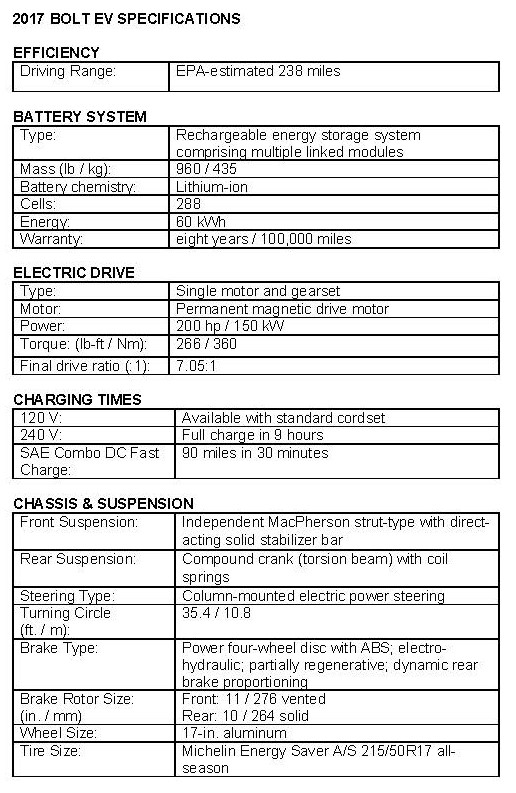
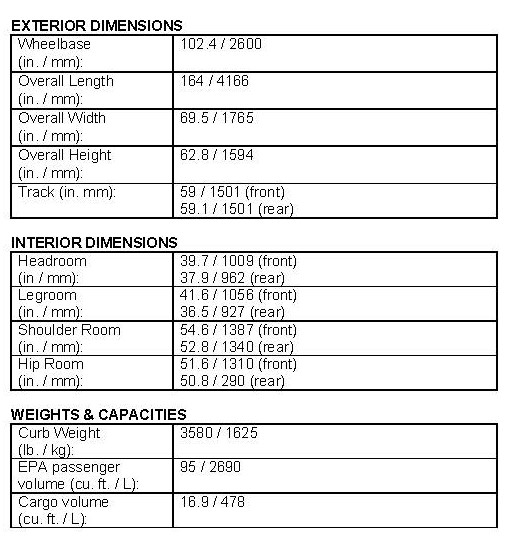

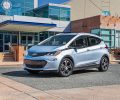
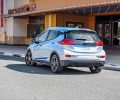
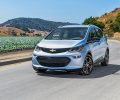

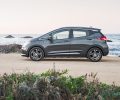
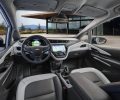
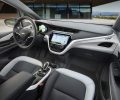
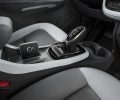


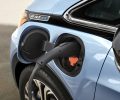

You must be logged in to post a comment.